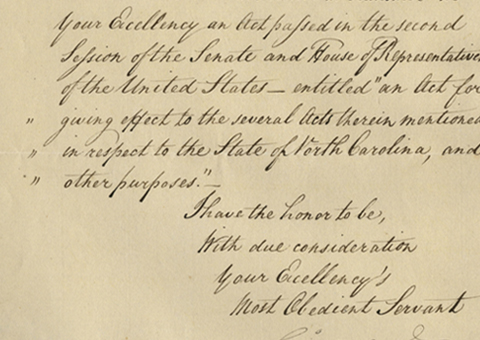Chief Justice John Jay Writes That He Expects to Commence the Court’s 1791 Term, in Which the Court Would Issue Its First Ever Opinion: “The rising of the Court to be held here early next month.”



Among the earliest letters of a sitting Chief Justice to reach the market and the 2nd Jay ALS in that capacity we found
Our records disclose no letters from Jay as Chief Justice dated before this having come up for sale
Our gratitude to the Papers of John Jay at Columbia University for their research assistance
John Jay was a New Yorker who served as President of the Continental Congress, and then as diplomat,...
Our records disclose no letters from Jay as Chief Justice dated before this having come up for sale
Our gratitude to the Papers of John Jay at Columbia University for their research assistance
John Jay was a New Yorker who served as President of the Continental Congress, and then as diplomat, helping negotiate the Treaty of Paris that ended the Revolutionary War. Before the U.S. Constitution came into effect, Jay was appointed Secretary of Foreign Affairs by the Congress. After the Constitution was ratified, he became the first Chief Justice of the United State Supreme Court, serving from September 26, 1789 until June 1795. Henry Remsen, Jr. was a financier and bank executive from New York City. When Jay was Secretary of Foreign Affairs, Remsen was his Under Secretary. When the State Department was formed under the Constitution, Thomas Jefferson became Secretary of State and Remsen soon became its Chief Clerk. From January 1 to September 1, 1790, Remsen left government service and was taken as a partner in his family firm, Henry Remsen & Son. Sometime between his return to the Chief Clerk’s post on September 1 1790, and March 1792, when he left office, Remsen also served as chief clerk of the first patent board and recorded the first rules for the examination of patents. In 1793 Remsen became an officer of The United States Bank. Later he was private secretary to Jefferson during his presidency.
West v. Barnes was the first United States Supreme Court decision and the earliest case calling for oral argument. West was argued on August 2, 1791 and decided on August 3, 1791.
In March of that year, Jay and the court prepared to gavel the term into session and set the docket for the cases they would hear in the summer. Among these was the first case to earn an opinion from the Supreme Court. In the interim, Jay and the other justices would ride the circuit, as was common back then.
A rare handwritten letter as Chief Justice. Autograph letter signed, Philadelphia, March 25, 1791, to Henry Remsen, Jr. “Agreeable to your friendly offers, I enclose my account against the United States for a Quarters Salary which will be due on the first of new month. Be so obliging as to have the account past and money ready to be paid here, before I set out on the Eastern Circuit, which will be immediately after the rising of the Court to be held here early next month.” Our research indicates that Remsen was handling the deposit of Jay’s salary and this letter almost certainly relates to that.
A search of public sale records over the past thirty years shows that not one Jay ALS as Chief Justice of any date reached that marketplace.

Frame, Display, Preserve
Each frame is custom constructed, using only proper museum archival materials. This includes:The finest frames, tailored to match the document you have chosen. These can period style, antiqued, gilded, wood, etc. Fabric mats, including silk and satin, as well as museum mat board with hand painted bevels. Attachment of the document to the matting to ensure its protection. This "hinging" is done according to archival standards. Protective "glass," or Tru Vue Optium Acrylic glazing, which is shatter resistant, 99% UV protective, and anti-reflective. You benefit from our decades of experience in designing and creating beautiful, compelling, and protective framed historical documents.
Learn more about our Framing Services










































































































